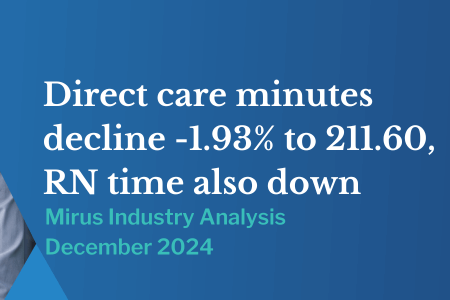Approach to Change Management: A Short Study of Aged Care Providers
April 15, 2025 | Guest Bloggers at Mirus

By guest blogger Victoria Mills, CEO & Founder of Hello Coach
As part of a monthly series for Mirus Mail, Hello Coach sat down with several CEOs working alongside Mirus Australia to explore their experiences, lessons, and wins in embedding change management into their organisations. Throughout this seven-part series, you’ll hear insights from Chris Mamarelis, CEO of Whiddon; Lucy O’Flaherty, CEO of Columbia Aged Care; and Nicole Klason, Executive Director of People and Culture at Newcastle Anglican.
Q1: What are the biggest challenges faced when leading organisational change and how were they overcome?
Leading organisational change is never a simple task. Change inherently creates disruption—breaking established patterns, causing uncertainty, and often sparking fear. Employees may worry about losing their sense of control, competence, or job security, particularly when change affects their everyday responsibilities. Organisationally, change can stall when there’s unclear communication, inconsistent leadership, or a lack of supportive frameworks.
Our interviews revealed that these challenges are all too familiar in the aged care sector. Chris Mamarelis of Whiddon described a significant gap in how change had been handled. “We struggled with visibility, alignment to KPIs, and sustainable implementation,” he said. Projects would be launched with good intentions but were often “set and forget”—not embedded or followed through effectively.
Nicole Klason echoed a similar sentiment, noting that the lack of a clear structure for engagement created inconsistency and resistance. “We don’t have the structure needed,” she said, referencing both the technical and cultural foundations required for successful transformation.
Lucy O’Flaherty from Columbia Aged Care highlighted how responses to change can vary dramatically: “It’s the detail, the direction, and shifting momentum. People respond differently to change.” These varied responses underscore the need for tailored approaches, emotional intelligence, and inclusive leadership throughout the change journey.
Q2. Building Change as an Organisational Capability – How did these companies address the gap?
A key theme that emerged was the importance of aligning organisational structure with change efforts. Without a clear structure that supports decision-making, communication, and ownership, even well-intentioned initiatives can flounder. Change-ready organisations build in collaboration, empowerment, and flexibility—so that when disruption happens, it becomes a catalyst rather than a roadblock.
Whiddon addressed this head-on. Chris shared how they brought in consultants to co-design a fit-for-purpose change management framework. A critical step was shifting the governance of change projects from ICT to executive oversight. “These weren’t just tech projects,” Chris said. “They were organisation-wide priorities. Moving governance under the CEO’s purview provided visibility, accountability, and strategic alignment.”
Q3. From Implementation to Adoption – What were the learnings?
One of the greatest insights across our conversations was the difference between implementing change and adopting it. Many organisations are good at launching new initiatives, but far fewer succeed in creating lasting, embedded transformation.
Columbia Aged Care’s approach centred on understanding their people. “You need to know where people are at—are they ready?” Lucy asked. Her advice: listen, pivot when needed, and course-correct if the change isn’t landing well.
Nicole Klason added, “Communication and preparation are critical. We can get caught in BAU [business as usual] and shift into reactivity, missing key steps—or even the right people.” This highlighted the importance of foresight, pausing to reflect, and consciously choosing a more strategic pace.
Q4. Resourcing Change for Success – What were the key insights?
Change can’t succeed without the right resourcing—especially in sectors like aged care, where tight budgets and stretched teams are the norm. One common insight was that appointing a single project lead isn’t enough. Instead, it requires embedded, on-the-ground support, cross-functional communication, and active leadership involvement.
At Whiddon, earlier top-down approaches often missed the mark. Now, they’ve pivoted to transparent, multi-channel communication that includes dedicated team channels, site-based feedback loops, and open engagement with vendors. “Honesty helped secure buy-in despite challenges,” Chris shared. This shift toward ongoing dialogue—not just directives—has been key to building trust and shared ownership.
The Human Side of Change
Change Every organisation we spoke to acknowledged that change is deeply human. Lucy O’Flaherty pointed out that resistance to change is especially strong in industries under pressure, like aged care. The key is to help people see the benefit of change—how it makes their work easier, improves care outcomes, or strengthens safety.
Long-tenured staff, in particular, can become powerful advocates when brought on board early. Their support can help shift organisational culture from passive resistance to active participation.
Leadership style also makes a difference. “Command-and-control doesn’t work,” Lucy said. “Authentic, transparent leadership fosters engagement and trust. Change must feel like a shared journey, not something imposed.”
Expanding Our Change Management Approach
All three organisations have recognised that change is not a one-off project—it’s an ongoing process of reflection and refinement. Structured review cycles are now part of their strategy, asking:
- What worked well?
- What didn’t land?
- Where can we improve support and engagement?
This iterative approach means they can respond to emerging challenges, realign strategies, and continuously improve.
A shared learning across the board was the need for a risk-based lens. Projects are now assessed not just on ambition, but on their potential impact to financial health, operational resilience, and long-term viability. This strategic triage ensures resources go where they matter most.
Creating a Culture of Change Readiness
Ultimately, the journey toward effective change management isn’t about systems alone—it’s about culture. These organisations are investing in leadership development, change resilience training, and staff engagement programs to help embed adaptability at every level.
Through initiatives like workshops, town halls, and team development programs, they’re creating environments where staff feel heard, supported, and part of the journey. When change becomes something people feel ready for—not something they fear—true transformation can take root.
Stay tuned on the next contribution in Mirus Mail on The Role of Leadership & Structure in Change Management.
Would you like to contribute some insights on Change Management?
This 1 min survey will help us share more learnings.
Victoria Mills
CEO & Founder Hello Coach


